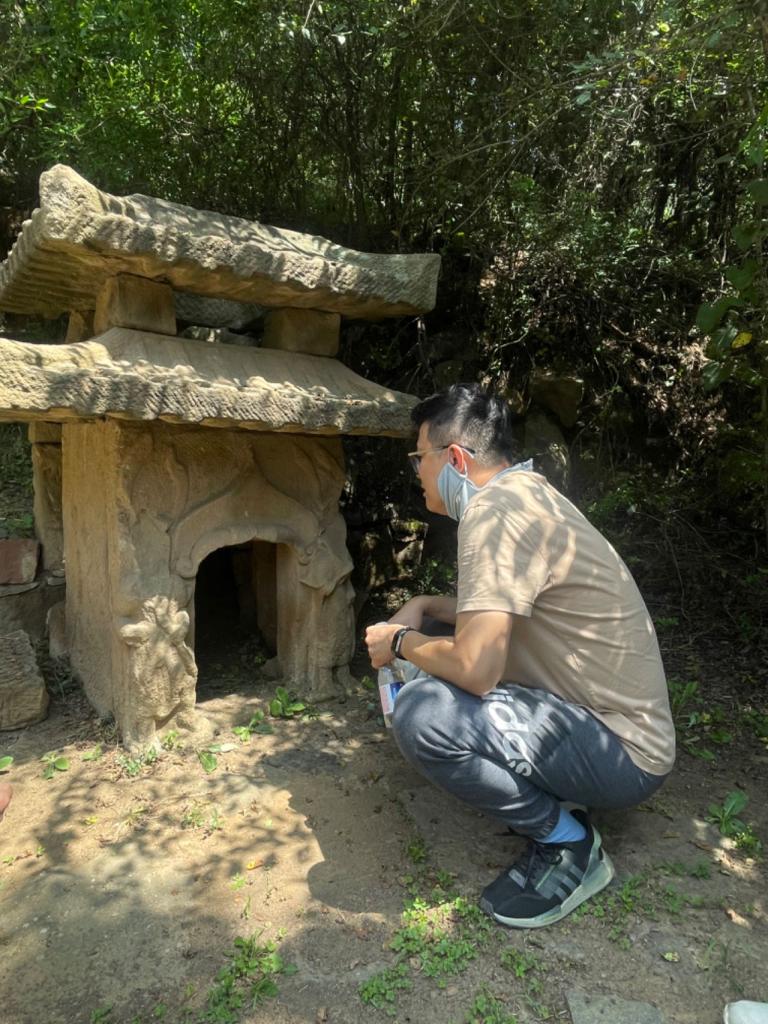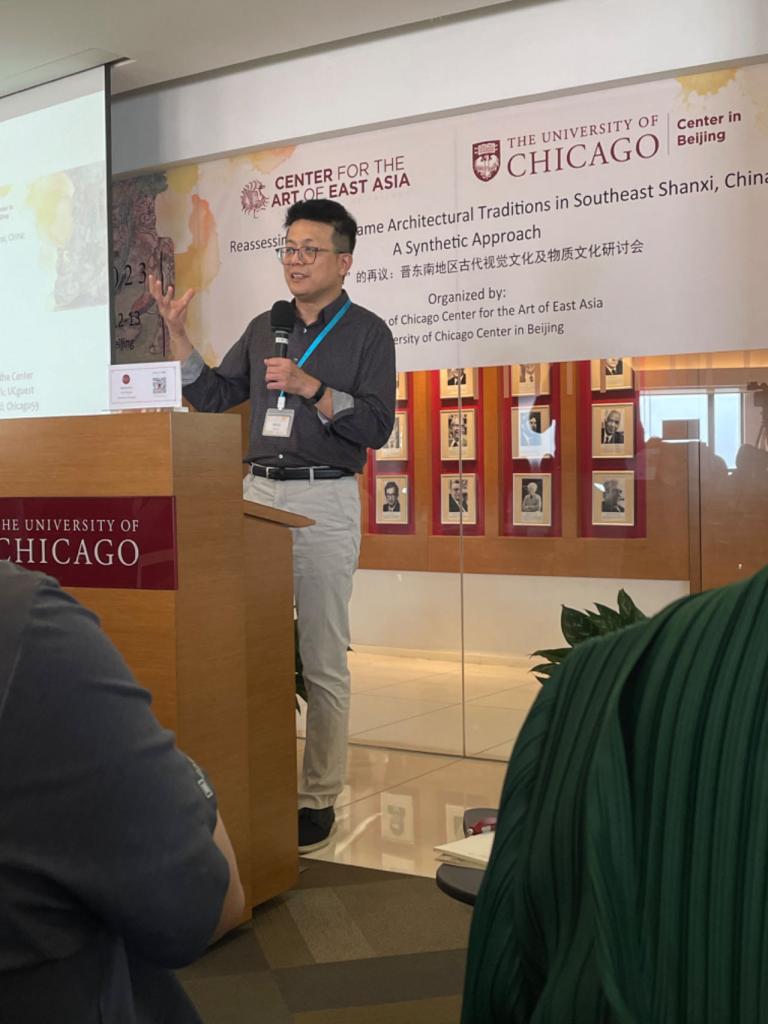CEAS Faculty Spotlight: Wei-Cheng Lin
PUBLISHED ON MARCH 28, 2024
Chinese art history was not part of Professor Wei-Cheng Lin’s career plan. Growing up in Taiwan and with an undergraduate degree in TV and Cinema, he fixed his eye on the new media art of the contemporary world when he traveled to the U.S. for graduate school. An internship at the Nelson-Atkins Museum of Art in Kansas City proved to be a life-changing experience. He often shared the story about his first Chinese art historical assignment by the museum curator to research a Ming recessed coffered ceiling, or zaojing 藻井, a nonstructural and iconographic component initially installed inside the Buddhist pavilion of the Zhihua Temple (1444) in Beijing. Without formal training in Chinese art history then, he failed to submit a report about the zaojing by the end of the internship, but the research and first-hand experience with artifacts helped catalyze his burgeoning passion for Chinese art history.

Professor Lin has a wide spectrum of research interests, focusing on issues that engage Chinese art in perspectives of visual and material cultural studies. He has published on topics in Chinese Buddhist art and architecture, funerary art and practices, technological art history, and Chinese architectural history and historiography, among others. Still, what distinguishes Professor Lin’s scholarship is his research in China’s built environment. For him, architecture is not just an art genre but serves as a framing and an approach to contemplate Chinese art. More than just a built architectonic structure, architecture configures space and participates in its production (or spatiality) that negotiates human subjectivity with the material world. His first book, Building a Sacred Mountain: The Buddhist Architecture of China’s Mount Wutai (2014), argues that China’s first Buddhist sacred mountain in China was established through the inter-contextuality between the mountain and the monastic architecture, which together superscribed the holy presence of Boddhisattva Manjusri (Wenshu pusa 文殊菩萨) over Mount Wutai’s natural terrain. His second book project, Performative Architecture of China, takes the approach one step further, focusing on the participatory and agentic power of architecture by exploring its performative potential through history and the meanings enacted through such architectural performance.
Outside architecture, another aspect of Professor Lin’s scholarship is his interest in the discourses solicited by material things created for various purposes. In a new book project, titled Necessarily Incomplete: Fragments of Chinese Artifacts, he argues that the complete meaning and multivalent significance of objects would not be fully comprehended without considering breakage as their fragments would continue to engage us and solicit cultural practices to come to terms with their incompleteness. In the same vein, his research on the breakage of artifacts that created modern art collections worldwide at the turn of the 19th to the 20th century draws our attention to the processes of their fragmentation and the subsequent relocation and dislocation. What is at stake is how the trafficking and collecting history shaped the art historical discourses through this fragmentation.
This last research interest was fostered by the digital humanities projects initiated by the Center for the Art of East Asia. While still a UChicago graduate student, Professor Lin was part of the Center’s earliest endeavor to advance art historical research by using digital imagining technology. Essentially, the Center’s digital projects virtually reconstruct the dispersed fragments of Chinese artifacts with their sites of origin. The digital restoration provides a mimetic simulation for viewers to experience art in ways no longer available in reality. It rehearses our sensorial perceptions of artifacts in a virtual world where the artifacts’ biographic accounts could unfold diachronically and/or synchronically. In 2019, the Center, expanding its earlier efforts, launched a new digital initiative, the Dispersed Chinese Art Digitalization Project (DCADP), of which Professor Lin has since served as its faculty director. The first project under the DCADP was the Beijing Zhihua Temple project.

Based on two conferences held at the Beijing Center, the Beijing Zhihua Temple project aimed to comprehensively reconstruct the temple’s Ming-Qing history, creating a paradigm for how a Buddhist temple from late imperial China ought to be researched. An integral part of the effort was also to digitally reconstruct the zaojing in the Nelson-Atkins Museum of Art’s collection with its original architectural/religious setting. The virtual reality created through the reconstruction provides a possibility to examine the zaojing contextually, reinstating its religious significance as intended in the temple. The digital project has been well-received, but it also put issues such as authenticity, cultural property, digital materiality, etc., into sharp focus. More important to Professor Lin, a long-delayed project finally came to an end – at least for now.
Wei-Cheng Lin is Associate Professor of Chinese Art and Architecture in the Department of Art History at the University of Chicago.
Read more about the CEAS Faculty Spotlight series.
 THE UNIVERSITY OF CHICAGO
THE UNIVERSITY OF CHICAGO


